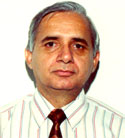Six Sigma under TBEM
By Developed by Motorola in | 12 Aug 2002
|
India’s top automotive manufacturer is now reaping the rewards of a comprehensive quality improvement initiative that it embarked upon in September 2000. The initiative is one of the key contributors to the company’s turning around quickly, from a loss of Rs 500 crore in the year ended March 2001 to a profit of Rs 28 crore in the first quarter of 2002-03.
Six Sigma under TBEM Developed by Motorola in 1986, Six Sigma employs a range of strategies and tools to eliminate defects in processes. Sigma, a letter in the Greek alphabet, is used by statisticians to denote the standard deviation of a process. To achieve Six Sigma quality, a process must produce no more than 3.4 defects per million opportunities (an opportunity is defined as a chance for non-conformance, or not meeting the required specifications). The higher the number of defects, the lower is your Sigma score. |
There were many Sigma defects that Tata Engineering had to eliminate to get back on track. The weight of competition, ever-increasing customer expectations and shifting market conditions made change an absolute imperative. The company’s older vehicles were getting obsolescent, and its newer ones were lagging behind in terms of customer satisfaction.
Winning strategy 
"We realised that to succeed we had to completely reorient the company’s thinking and the thinking of our people," says Atam P. Arya, Tata Engineering’s senior vice president overseeing the quality initiative. "We had to stop treating quality as a burden and start accepting it as the main purpose of our existence. Quality became, for us, the strategy for survival — and for winning."
An important challenge for Tata Engineering was in changing the mindset of its people. "Initially our people were very sceptical; they thought this was some new fad that would soon go away." To ensure it did not, the company conducted a blanket communication and training exercise across the organisation. This started at the highest levels, with the leaders and managers, and then percolated to the rest of the employees.
The focus of the Six Sigma programme at Tata Engineering was, and remains, the customer. The company took its products and analysed what customers would want from them, and the critical-to-quality (CTQ) characteristics they would be looking for. For instance, a customer buying a truck will consider whether it measures up in terms of load, speed, fuel efficiency, operational smoothness, etc. These are his CTQ characteristics.
As long as a CTQ attribute can be defined, it can be incorporated in the Six Sigma model. These attributes can then be linked to the manufacturing parameters that must be achieved under the Six Sigma process to meet a customer’s expectations. Tata Engineering drew up a whole system around this, the stated goal of which was: "To achieve a major breakthrough and a sustainable quality improvement in all our products and business processes."
Less is more
"We began telling our people that quality had to, primarily, connect with our customers," says Mr Arya. "By improving quality, we reduced the cost of manufacturing: less rejection, less rework, smoother process flows, less time taken, etc." This has led to an increase in productivity and decreases in costs, defects and wastage. Consequently, customer satisfaction has registered a significant jump.
It's not that the company did not have quality programmes earlier. "It was there, but it wasn’t quantified. It was seen in black and white terms and we could not put any values to it. There were many missing links between our quality standards and what the customer wanted. Our previous quality initiatives did not take in the whole. The big picture was lost."
Six Sigma’s spread is vast enough to take in the big picture. Because it is more rigorous than percentage-based applications — where 90 per cent defect-free means 100,000 bad eggs in 1 million — Six Sigma comes closest to realising the ideal of perfection.
Clear and visible
What Tata Engineering did initially was apply the Six Sigma standard to its products, with the aim of recording a clear and visible improvement in them through this method. It set up a strong Six Sigma organisation and established a robust audit and monitoring mechanism to ensure that targets were met and sustained.
A large number of teams were put in place to implement the project. There was one at the apex level to oversee the overall implementation and others at the company’s plants in Jamshedpur, Pune and Lucknow. A filtering procedure was created to identify and isolate problems. Firstly, the CTQ features at the aggregate level — body, engine, paint, gearbox, axle, etc — were considered. Then came the components, and after that the supplier-level CTQ characteristics.
The improvement processes followed: skill enhancement, process mapping, cause-and-effect analysis, failure-mode-and-effect analysis (which helps anticipate problems and puts pre-emptive corrective measures in place) and more. Next in line were product audits, process audits and independent audits, which were later matched to customer needs. Coming under the Six Sigma microscope were three process levels: manufacturing, support services and plant support services.
"In manufacturing, we wanted the initial product delivered to be superior (because first impressions are important)," says Mr Arya. "Then came product performance norms such as reliability and durability. We tracked our manufacturing and delivery systems before we audited product performances over a long-term period."
Benefits quick to show
The benefits of the Six Sigma project were quick to show. A plant audit of internal improvement commenced in October 2000, a month after the quality initiative was launched. The focus was on the chassis line, which was tracked on a weekly and monthly basis. By March 2001 Tata Engineering had secured an improvement of 82.5 per cent here.
Overall, quality improvement for the first year of the Six Sigma project (September 2000 to August 2001) was 80 per cent. Since then it has been between 65 to 75 per cent a year.
Enhanced customer gratification is the biggest gain of the Six Sigma initiative, but there are others. Dealer satisfaction, for one. "Our dealers used to spend seven to eight hours in pre-delivery inspection of each of our trucks. We brought that down to 20 minutes. Earlier the dealer had to check about 140 points in a truck; now he has to examine only 30-odd points." Another is product performance, which has meant decreases in failure rates and customer complaints.
So where does the company go from here? "At present our products and processes are mostly in the Three and Four Sigma band, but by the end of 2003 we should be reaching Five Sigma for the entire company. We are now working on two different degrees of the project: involving a much larger number of people, and involving people in the back offices, support services, etc." Currently between 1,500 to 2,000 people are directly involved in the Six Sigma project, but every Tata Engineering hand has been touched to some extent by the programme.
The company’s intention is to reach the Sigma peak of six in some priority areas by 2005. But it’s not going to be easy. "From Five to Six Sigma is a steep climb, but then you must consider that with this methodology you can keep raising the bar. Six Sigma’s potential is limitless. You can extend the spread, the processes and their coverage, and you can link it to your future strategies. There really is no end to it." The road ahead is clear. Courtesy: www.tata.com
This is the first of the two articles on the turnaround at Tata Engineering. The second, , looks at the success of the company’s cost-erosion initiatives. The writer can be contacted at:
Featured articles

Lighter than air, yet very, very powerful
By Kiron Kasbekar | 03 Jan 2024
In March 2013 Chinese scientists pulled off a remarkable feat. They created the world’s lightest aerogel. Tipping the scales at a mere 0.16 milligrams per cubic centimeter – that’s a sixth of the weight of air!

COP28 explained: A closer look at COP28's climate change solutions
By Aniket Gupta | 27 Dec 2023
The 28th United Nations Climate Change Conference, also known as COP28, took place from 30th November 2023, to 13th December 2023, at Expo City in Dubai, United Arab Emirates.

What is a Ponzi scheme?
By Aniket Gupta | 06 Dec 2023
Ponzi schemes have long captivated the public imagination, drawing unsuspecting investors into a web of illusion and deception.

The Rise and Rise of HDFC Bank
03 Jul 2023
HDFC, which surged ahead of global majors like HSBC Holdings Plc and Citigroup Inc and left Indian peers like State Bank of India and ICICI Bank in market capitalisation, now ranks fourth largest among the world’s most valuable banks, after JPMorgan Chase & Co, Industrial and Commercial Bank of China Ltd and Bank of America Corp

India’s Millet Revolution To Enrich Global Food Basket
02 Apr 2023
Millets, a healthier and cheaper substitute to wheat and rice, are indigenous to many parts of the world, especially in the semiarid tropics of Asia and Africa, and offers a big scope for expanding production and consumption in the foodgrain deficient African continent

Market predator Hindenburg preys on Adani stock
06 Mar 2023
Almost a month after the damning report of short-seller Hindenburg Research on the Adani Group that claimed that the seven stocks within the group were about 85 per cent overvalued, one of the group's stocks, Adani Total Gas, closed at Rs835 on the BSE, down nearly 79 per cent from its 24 January level, almost close to reaching that valuation
Business History Videos

History of hovercraft Part 3...
By Kiron Kasbekar | Presenter: Kiron Kasbekar

History of hovercraft Part 2...
By Kiron Kasbekar | Presenter: Kiron Kasbekar

History of Hovercraft Part 1...
By Kiron Kasbekar | Presenter: Kiron Kasbekar

 Mumbai: Webster’s dictionary defines quality as "a degree or grade of excellence or worth". For the best companies in today’s global business environment, the term means much, much more. They see quality as the cornerstone of their enterprise, and the ability to enhance it as the defining principle of profitability. Tata Engineering, which turned the corner recently, has come to understand this better than most.
Mumbai: Webster’s dictionary defines quality as "a degree or grade of excellence or worth". For the best companies in today’s global business environment, the term means much, much more. They see quality as the cornerstone of their enterprise, and the ability to enhance it as the defining principle of profitability. Tata Engineering, which turned the corner recently, has come to understand this better than most. While the cost-cutting measures undertaken by Tata Engineering have been a major factor in this revival, the quality initiative has played a role just as important. The potential for improvement that the initiative creates is endless.
While the cost-cutting measures undertaken by Tata Engineering have been a major factor in this revival, the quality initiative has played a role just as important. The potential for improvement that the initiative creates is endless.


.jpg)






.jpg)









